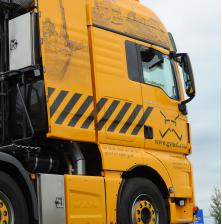Curious about our possibilities?
Feel free to contact us.

Buildings are becoming ever larger and foundation techniques increasingly complex. In addition, a foundation will always have to deal with various forces, depending on the type of soil. These forces influence the bearing capacity of foundation piles. To test foundations and especially the latest foundation techniques in the correct manner, a pile test can be a carried out. There are various ways to test bearing forces of foundation piles by means of test loads.
Static pile load test
With such a test a horizontal beam is placed on a number of foundation piles. The load on this beam is increased and as a result higher and higher forces are created on the piles. Through these forces there are movements in the piles, which are measured. In this manner the bearing capacity of the foundation piles is measured meticulously and it is clear to report how it responds to certain forces. This test method takes a relatively long time, but gives accurate and complete results which can be used for the further development of the construction work.
Dynamic load test
The purpose of carrying out a dynamic test load is also to determine the soil mechanical bearing capacity with the associated load-sinking behavior of a foundation pile. The measuring principle is almost identical to performing a PDA measurement with the distinction that the dynamic test load is performed on a pile that is in equilibrium with the subsurface, with pore water pressures being dissipated. Dynamic test loads can be carried out with the aid of a 'dead' drop weight, which is lifted with the aid of a telecrane and then dropped (via a sliding rod) back onto the pile head. Although this offers advantages in terms of mobilization compared to the use of a pile driver, it must be borne in mind that the execution of a separate test is much more laborious and, in terms of quality, produces much lesser measurement signals, with a less reliable prediction of the load capacity as an implicit result.
PDA measurements
PDA measurements (Pile Driving Analysis) can be performed in order to reveal more information about the piling process. Strain sensors and acceleration sensors are attached to the head of the pile. Connected to a fieldwork PC, these deliver real-time forces and speeds in the pile during the pile-driving process. On the basis of these data, it can be determined during each piling stroke, inter alia, which stresses (pressure and tension) occur in the pile and which energy is transmitted, what the dynamic pile driving resistance is and how it is centrically hit. This application is particularly prevalent in pending piling works, where (unusually high percentages) pile damage is (unexpectedly) encountered. Based on the measurement results recommendations can be made for adjustment of the piling process.
